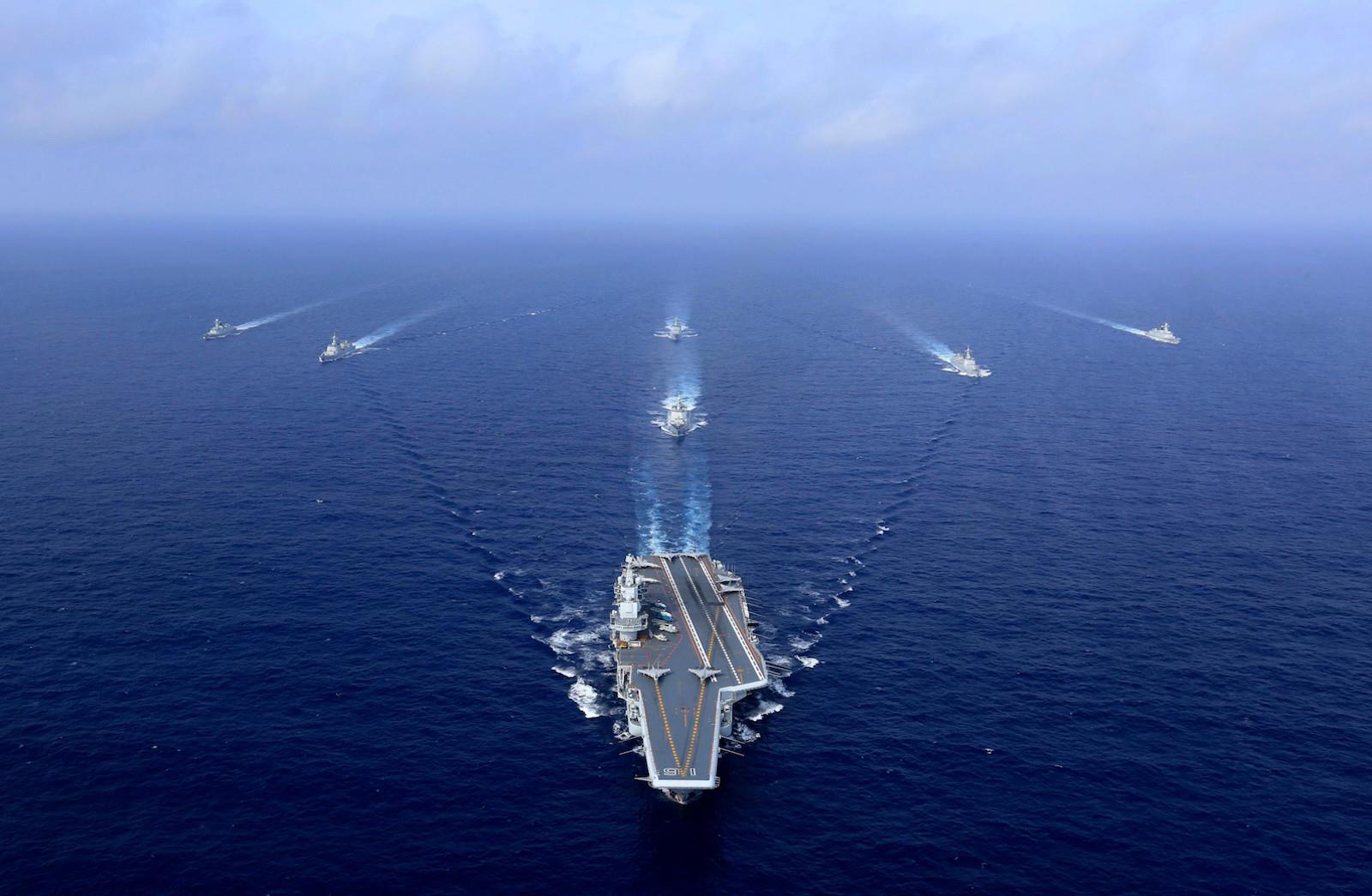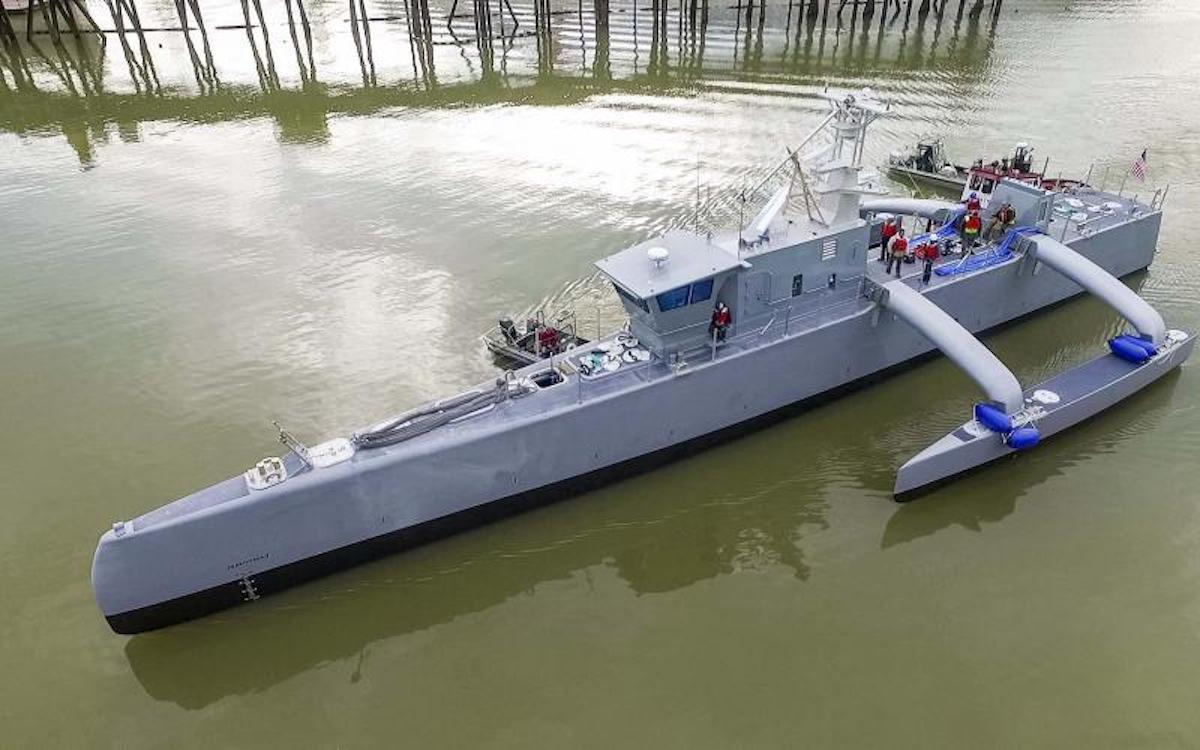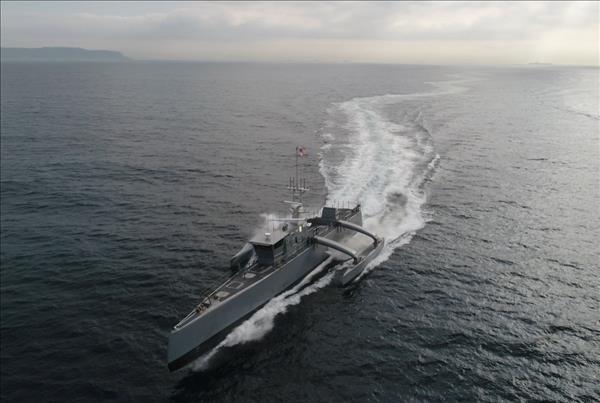
US Floating More Robot Warships To Check China
The US is speeding up the deployment of unmanned vessels as an affordable way to catch up with China's rapidly growing navy and simultaneously avoid costly recent shipbuilding mistakes, the Associated Press reported last week.
This year's iteration of the Rim of the Pacific (RIMPAC) naval exercises from June 29 to August 4 features the newly-created Unmanned Surface Vessel Division 1 (USVDIV-1), a US Navy unit tasked to“accelerate the delivery of credible and reliable unmanned systems in conjunction with increasingly capable manned platforms into the fleet,” the US Naval Institute reported .
According to the Institute, USVDIV-1 will operate unmanned trimarans USV Sea Hunter, USV Sea Hawk and unmanned support vessels Nomad and Ranger.
Sea Hunter was unveiled in 2016 as part of the US Defense Advanced Research Projects Agency's (DARPA) Anti-Submarine Warfare Continuous Trail Unmanned Vessel (ACTUV) program and is suited for shallow-water operations. Two diesel engines give it a top speed of 27 knots with 40 tons of fuel for a range of 10,000 nautical miles at 12 knots.
Sea Hawk is an upgraded version of Sea Hunter, delivered to the US Navy in 2021. It is slightly heavier at 145 tons and incorporates more than 300 lessons from the former design.
According to The Warzone , the Pentagon's Strategic Capabilities Office (SCO) converted Nomad and Ranger from commercial fast supply vessels used for various offshore activities, such as resupplying oil platforms and offshore wind farms. As a result, they feature sizeable rear cargo areas, which mission planners can reconfigure to accept different payloads.
In September 2021, the US Navy fired an SM-6 missile from a containerized four-pack launcher from the Ranger's deck, as reported by The Defense Post. The test showed the type's potential to be an ad-hoc combatant following the US Navy's distributed lethality concept.
Experimentation performed during RIMPAC 2022 will allow USVDIV-1 to gather data about the vessels' operational requirements and how to integrate unmanned assets into a larger fleet structure, says the US Naval Institute.
The Associated Press report mentions that the long-term goal is to see how their sensors and radar can be integrated with AI and manned combatants such as cruisers, destroyers, submarines and aircraft carriers to create a networked, resilient and dispersed fleet that is more difficult to track and destroy.
Defense analyst Loren Thompson mentions in Associated Press that cost is the most significant advantage unmanned vessels have to offer, as the US is struggling to keep up with China's naval shipbuilding program. China already has the world's largest navy in terms of ship numbers and the gap between China and the US is steadily increasing.

China's Liaoning aircraft carrier during a drill in the South China Sea on April 18, 2018. Photo: AFP / Getty Images
The source also mentions that although the US Navy is already using unmanned vessels on a relatively small scale in the Persian Gulf, it must persuade a skeptical Congress to step up the deployment of such vessels in the much larger Pacific against China.
A July 2022 Congressional Research Service (CRS) report raises essential questions about the US Navy's efforts to upscale the deployment of uncrewed vessels into the Pacific. The report probes how these unmanned vessels integrate into a larger fleet structure, their concept of operations (CONOPS), acquisition strategies, schedule, costs, technical risks, implications to US shipbuilding and their potential to contribute to escalation and miscalculation at sea.
The CRS report mentions that the US Navy is moving forward in developing plans for a more distributed fleet structure in which uncrewed vessels will play a significant role but also notes that many specific details are left to the imagination.
The CRS report also doubts the correctness of the US Navy's focus on the warfighting metrics of these systems and less on their implied indirect sustainment tasks and required sustainment assets, such as motherships and support bases.
Despite those gaps, Nurettin Sevi, a Turkish Navy captain writing for the Naval Technology defense website, notes that uncrewed vessels can be integrated into current fleet structures as force multipliers by extending and supporting the situational awareness of crewed vessels and operating with the latter in missions such as minelaying, minesweeping, finding, tracking and engaging adversaries.
The report also poses questions about how developed the US Navy's CONOPS for unmanned surface combatants is and how the US Navy will operate and sustain these systems on a day-to-day basis. The report notes the potential for ever-changing capability demands from these systems due to a lack of fully-developed CONOPS.
Given these questions, defense analyst Robbin Laird writes in Defense.info that the US is exploring how to integrate uncrewed vessels in combined operations with its allies, how these systems would interact with crewed assets and the implications of emerging technologies such as AI and machine learning on unmanned maritime combatant capabilities.
Regarding the acquisition strategies, schedule, costs and technical risks uncrewed vessels bring, the CRS report asks whether the US Navy's risk mitigation and management programs are sufficient to address risks implied by the technology. It also asks if operational concepts and enabling technologies such as networks and software are mature enough before the serial production of uncrewed vessels.
The CRS report points out that the US Navy employs a“learning on the fly” approach to uncrewed vessels because it has acquired a handful of prototypes and notes lessons learned from their use. It also mentions that the US Navy believes this approach is the fastest way to field these assets.
However, the practice, as opposed to building land-based testing facilities first, has infuriated US policymakers in the past due to previous failures of expensive programs after skipping the last step.

The Sea Hunter in a file photo. Image: DARPA
Among these controversial programs are the Littoral Combat Ship (LCS), whose production was discontinued in favor of the Constellation-class frigates, the Advanced Gun System (AGS) for the Zumwalt-class destroyers, whose ammunition proved to be too expensive for practical use, and the protracted development of Ford-class supercarriers.
Paradoxically, the CRS report notes that uncrewed vessels may increase overall cyberattack vulnerability. Their complex systems may increase reliance on human operators, maintenance teams and manned vessels, defeating their purpose to unman the battlespace.
In a 2017 paper published in the St Antony's International Review journal, Caroline Varin notes that an estimated 30 people are required to operate a Predator or Reaper drone, with an additional 80 required to analyze data for the drones. It notes uncrewed vessels might end up having similar personnel requirements.
The report also notes that the false promise of unmanning the battlespace given by uncrewed vessels, driven by misplaced confidence in immature technology and a paradoxical increase in required human input for these unmanned systems to function, may lead to the premature retirement of manned assets, opening even more significant capability gaps.
In terms of shipbuilding and maintenance requirements for uncrewed vessels, the CRS report asks what portion of these uncrewed vessels can be built by other shipyards that make the US Navy's major combatants and how the production of these systems might affect current US naval shipbuilding plans, workloads and employment schemes at various facilities.
Perhaps most tellingly, the CRS report mentions that unmanned vessels have significant implications for miscalculations or potential escalations at sea. The report notes that these expendable systems may lower the threshold for military action, emboldening commanders to take aggressive courses of action without risk to human life.
In addition, the proliferation of unmanned vessels can lead to a“flash war ,” wherein opposing autonomous systems interact, leading to an uncontrollable spiral of escalation.

Legal Disclaimer:
MENAFN provides the
information “as is” without warranty of any kind. We do not accept
any responsibility or liability for the accuracy, content, images,
videos, licenses, completeness, legality, or reliability of the information
contained in this article. If you have any complaints or copyright
issues related to this article, kindly contact the provider above.

















Comments
No comment